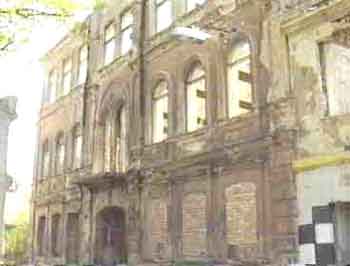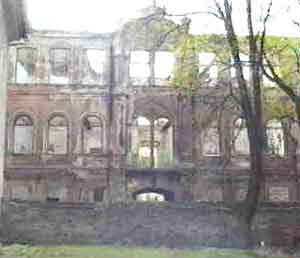What Will I be When I'm a Grown-Up?Studies in Vilna.In the Fall of 1926 I left my mother and family and went to Vilna by bus. My brother Yaacov-Hirsh accompanied me. I was very excited. I felt that this was a new beginning. Prior to the trip we read many brochures of the various Vilna schools. The decision to study sewing in the "Hilf Durch Arbeit" (Help by Work) Trade School was painful for me, in a way. Although I loved handicrafts, especially sewing, I felt that I was capable of academic studies. I really wanted to become a teacher. I asked my brother to make arrangements for me to study at the same Teachers Seminarion (Academy) in which Yehoshua Rabinovich was still studying at that time. I felt that as a teacher my status in Vishnive would be "on top of the world". However my meager savings and the small monitary help I could get from home were not enough to allow me to study to be a teacher. "YACOPO" would grant me only $8/yr for studies at the Seminarion as compared to $25/yr at a Trade School. Needless to say I chose sewing. I felt excitement in the air as my brother and I climbed on the bus. Just thinking about living and studying in Vilna - which was known as the "Jerusalem of Lithuania"- was thrilling. Upon arrival in Vilna there was already an apartment waiting for me. My brother had arranged it ahead of time.
"Hilf Durch Arbeit" - A Trade School in VilnaThe school was Jewish; the staff was Jewish. It was supported by the WIZO organization. It was located at 17 Sobots Street, in the center of Vilna. It was a four-year school. It had four departments: Drawing, Photography, Carpentry and Sewing. All the departments, except sewing, were co-ed. Sewing had only female students. Students came from all over Poland.I arrived at the school with my brother. I had brought with me transcripts of my very good grades from the "Tarbut" school and excellent recommendation from the tailor. I had a two hour entrance exam in math, which I passed successfully. I was accepted immediately to the third year.We studied every day from 9 to 5. The teacher named Stefl Sterlatzki was in charge of my class. The Head of the Sewing Department was Madam Selena from Paris. We studied sewing and embroidery, in addition to the drawing of dress patterns. During the school year the students had to submit several projects as well as a final project. These projects included sewing dresses following patterns taken from professional journals. The dresses were made of high quality fabric such as velvet. The more complicated the pattern, the higher the grade. We even had a strike! We did not like our fabric-cutting instructor. In sewing, it is crucial to cut the fabric properly. The dress will match the body better if the cutting is good. We demanded a better instructor. After negotiations, our demands were met. I loved the school and I was an excellent student. The school published the names of the best students, mine included. That brought me many private clients. I was sewing dresses for Mrs. Vilenski whose husband was a member of the school board. I earned enough to survive comfortably in that wonderful city. I remember one Saturday evening, while having good time, a client approached me and asked, "Have you finished my dress?" I was thinking, "Why did I agree to load myself with so much work?" After I graduated and got my diploma, Mr. Abramovich, the school principal, asked me, "When will you arrange your papers to go to Paris in order to continue your studies?" I answered, "Where can I get the money?" Paris at that time was blossoming with thousands of students, for it has always been a world center for Sewing and Fashion.
"Hilf Durch Arbeit" Vilna 1996:

|
|
To the next chapter Back To English Hompage |